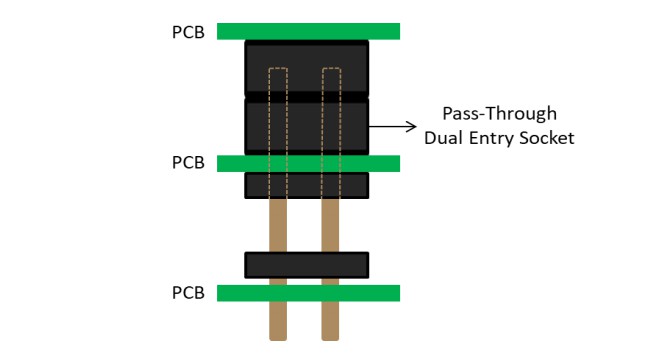Intro to Board to Board Connector Series Part 4
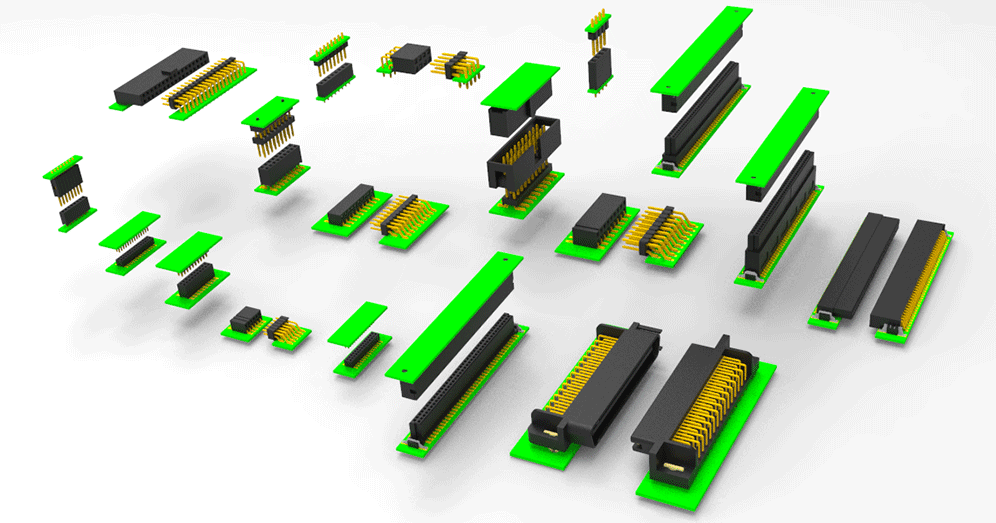
As electronics getting more compact, PCB stacking must be precisely controlled and supported. Elevated connectors are designed specifically to meet that need.
What are Elevated Connectors?
Elevated Header
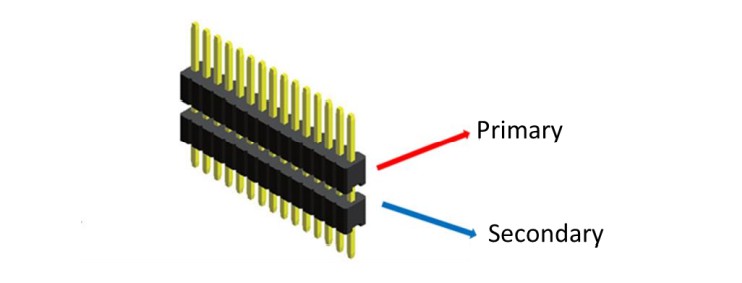
Elevated Female Header (or Elevated Socket)
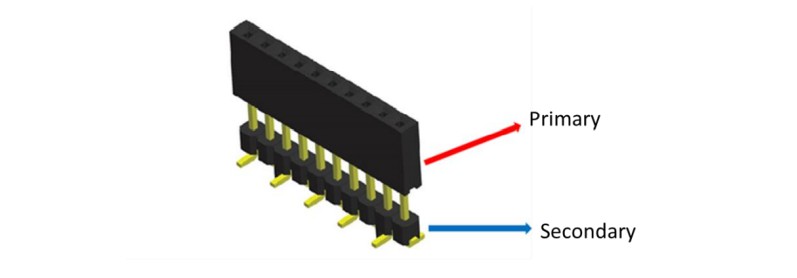
An elevated connector is equipped with secondary or more plastic insulations in addition to its primary insulation. As spacing between PCB gets wider, long terminals are easily exposed in such that foreign objects could get in between the terminals and cause a short circuit. The additional insulation(s) can not only minimize the exposed area of the terminals, but also help controlling the stacking height at a fixed elevation, see below illustration.

What are top entry, bottom entry & dual entry?

A top entry socket allows a header (male) to be inserted from the top. It is commonly used in applications and more cost-effective than a bottom entry socket.
On the other hand, a bottom entry socket requires a header to be inserted through the PCB first, before being inserted from the bottom. While it requires extra holes drilled on the PCBs, it allows larger components to be sandwiched between the PCBs. Below is an example of PCB layout for a bottom entry socket.
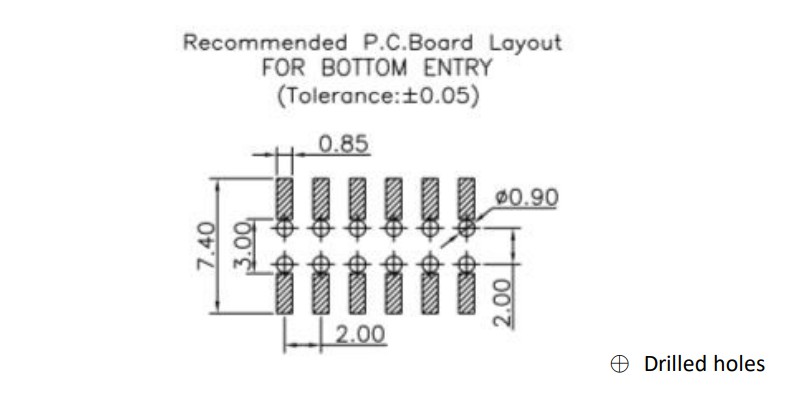
Dual Entry Socket: A dual entry socket, also known as a pass-through socket, offers designers the ability to stack three boards. First, the bottom board has a header with long pins. These pins will pass through the dual entry socket mounted on the middle PCB. These same terminal pins are then mated with a second socket on the top board, see below illustration.
